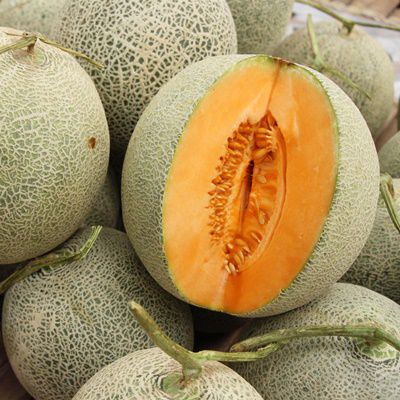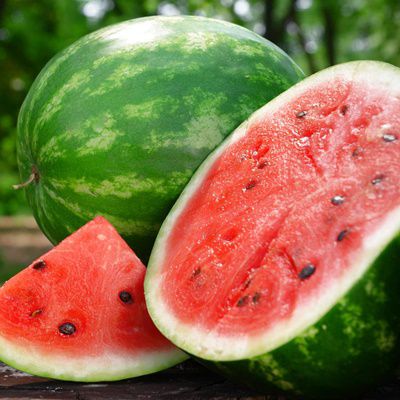🍒 Fruit Quick Facts
Fruit Info
- 🌍 Origin / Region: Southern China
- 🍽️ Culinary Use: Beverages/Teas, Chutneys, Jams and Jellies, Liqueurs/Wines, Marinades/Dressings, Sauces
- 🥗 Edible Part: Fruit pulp, Rind, Seed
- 😋 Flavor Profile: Sweet-tart
Growth Traits
- 🌱 Life Cycle: Perennial
- 🌾 Plant Type: Tree
- 🔁 Fruiting Needs: Needs Only 1 Plant
- 🪴 Growth Habit: Compact, Rounded, Slow Growing, Spiny
- 🌸 Flower Color: White
- 🌿 Foliage Type: Evergreen
- 📏 Mature Height: 2.4 - 4.5m
- 🦋 Pollinator Method: Attracts Bees, Attracts Butterflies, Self-pollinating
Growing Requirements
- 🌞 Sun Exposure: Full Sun
- 💧 Water Needs: Avoid Overwatering, Regular Water, Water Deeply
- ☀️ Growing Conditions: Cold Tolerant, Frost Tolerant, Heat Tolerant, Moderately Drought Tolerant
- 🟤 Soil Preference: Clay, Compost Enriched, Loam, Sandy, Slightly acidic, Well-Drained
Kumquat Tree – 2 Seeds
(Citrus japonica)
R50.00
In contrast with other citrus fruits, the peel of the kumquat is sweet and edible, while the juicy flesh is tart.
Indoor Sowing: Spring and Summer.
Direct Sowing: Spring.
Out of Stock
Email me when the product is back in stock.
🍒 Fruit Quick Facts
Fruit Info
- 🌍 Origin / Region: Southern China
- 🍽️ Culinary Use: Beverages/Teas, Chutneys, Jams and Jellies, Liqueurs/Wines, Marinades/Dressings, Sauces
- 🥗 Edible Part: Fruit pulp, Rind, Seed
- 😋 Flavor Profile: Sweet-tart
Growth Traits
- 🌱 Life Cycle: Perennial
- 🌾 Plant Type: Tree
- 🔁 Fruiting Needs: Needs Only 1 Plant
- 🪴 Growth Habit: Compact, Rounded, Slow Growing, Spiny
- 🌸 Flower Color: White
- 🌿 Foliage Type: Evergreen
- 📏 Mature Height: 2.4 - 4.5m
- 🦋 Pollinator Method: Attracts Bees, Attracts Butterflies, Self-pollinating
Growing Requirements
- 🌞 Sun Exposure: Full Sun
- 💧 Water Needs: Avoid Overwatering, Regular Water, Water Deeply
- ☀️ Growing Conditions: Cold Tolerant, Frost Tolerant, Heat Tolerant, Moderately Drought Tolerant
- 🟤 Soil Preference: Clay, Compost Enriched, Loam, Sandy, Slightly acidic, Well-Drained
Kumquat tree seeds. Kumquat Tree (Citrus japonica), is an easy-to-grow fruit tree. The kumquat tree originates in Asia and in Chinese kumquat means “golden orange.” In contrast with other citrus fruits, the peel of the kumquat is sweet and edible, while the juicy flesh is tart. Kumquats are small trees that make it perfect for growing in a small backyard. Depending on size, the kumquat tree can produce hundreds or even thousands of fruits each year. The small fruit from the Kumquat tree can range anywhere from yellow to bright orange and can be round or oval in shape. Kumquats can tolerate both cold and hot temperatures.
Kumquat Culinary Uses
- There are very few seeds in the kumquat fruit, and the rinds are sweet, regardless of how acidic the inside is.
- The bright orange, citrus fruit is excellent for marmalades, dried, or as made into preserves.
- Kumquats can also be sliced and added to salads.
Growing Kumquat Trees
Indoor Sowing: Spring and Summer.
Direct Sowing: Spring.
- The Kumquat tree is self-pollinating, so you do not need to grow multiple trees.
- Sow Kumquat tree seeds in Spring.
- Kumquat seeds germinate best in a 10cm pot filled with a gritty seed-starting mix such as 1 part peat and 1 part coarse sand.
- Place the Kumquat Tree Seeds on the surface of the moist soil, then cover them with a thin layer of coarse sand.
- To maintain a warm, humid environment, place the pot in a clear plastic bag, then close the bag securely. The seeds need a warm place to germinate. The plastic bag will keep the environment moist, but it’s important to check the potting soil two or three times every week, then water if the soil begins to feel dry. Bright light isn’t required at this stage.
- Remove the plastic bag and place the pot in bright, indirect light when the seeds germinate, which usually takes two to four weeks.
- When the kumquat seedlings are large enough to handle, transplant them into small pots.
- When the weather warms the following spring, the kumquats can be hardened and moved to an an outdoor area where the seedlings are protected from harsh wind and hot, direct sunlight. Alternatively, the kumquat seedlings can be grown indoors for another year or two.
- They also do well in pots or containers with suitable drainage holes, but will grow much better if directly planted in the ground.
- When growing kumquat trees in containers re-pot every 2-3 years in containers that are at least a few inches bigger than the previous one. The ideal time for re-potting is the early part of the leaf-growing stage in spring.
- Kumquat tree flowers in late spring into early summer.
- The plants require moist soil, so they need ample water to prevent drying of roots.
Can this plant be used for culinary purposes?
Kumquat Tree is traditionally used in culinary applications, including cooking and the preparation of food and beverages.
Disclaimer
Medicinal Information:
All medicinal information on this website is for educational and informational purposes only and may not be construed as medical advice. The information is not intended to replace medical advice or treatment offered by healthcare professionals.
Seeds, Plants, Plant Cuttings, Geophytes and Dried Herbs:
In some countries and provinces, certain plants are deemed as invasive and are not allowed to be planted at all, whilst some plants are allowed to be grown only in certain areas or provinces. The onus is on you as the buyer to familiarize yourself with the regulations pertaining to your location, before purchasing any of our seeds, plants, plant cuttings, geophytes or dried herbs. We will not be held liable, should you purchase any seeds, plants, plant cuttings, geophytes or dried herbs. from us which are prohibited in your country or province.
















